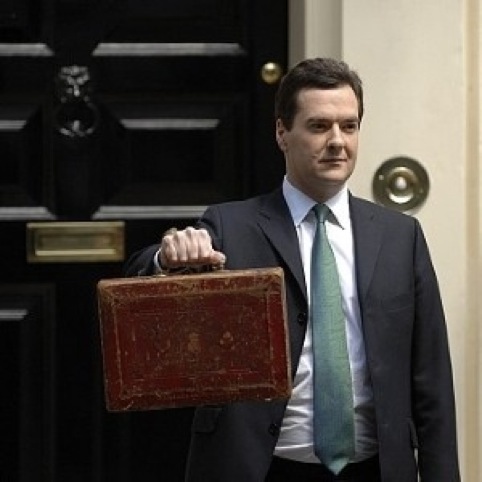News Analysis – What the Budget means for design
As the Budget received a broad backlash yesterday, its focus on business shows a potential for design consultancies to prosper – but could this just be the larger groups?

Certainly lower tax rates and more tax incentives for investment have been offered, and then there’s the headline grabbing 50p income tax rate which is being dropped to 45p for those earning more than £150,000.
One move which may help design businesses is corporation tax which stands to be reduced from 1 April 2012 when it will drop from 26 per cent to 24 per cent – 25 per cent was expected. It will then be reduced by a further 1 per cent in each of the following two years, reaching 22 per cent in April 2014.
However the small companies rate remains unchanged, at 20 per cent, although Chancellor George Osborne did outline a desire to create a single rate of corporation tax of 20 per cent, but as Mike Hayes, tax principal at accountancy firm Kingston Smith LLP points out, ‘This is an aspiration, not a promise.’
Hayes also says, ‘We now have one of the lowest rates of corporation tax in the Organisation for Economic Co-operation and Development [countries], which makes the UK an attractive location for design, media and technology businesses.
‘For existing businesses, it will mean the retention of more profits and the ability to fund growth and recruit staff.’
Meanwhile changes to the Controlled Foreign Companies rules ‘will make the UK a more attractive place for businesses wishing to establish trading activities around the world, in countries with lower tax,’ says Hayes.
This move was already on the cards and may be the final pull factor WPP chief executive Sir Martin Sorrell needs to bring the ad group’s headquarters back to the UK from Ireland.
Earlier this month he had said ‘we will be coming back subject to shareholder approval’ – comments made in the light of the clarification of taxation on foreign profits for multinationals.
In 2008 faced with what he called ‘double taxation’ Sorrell moved the company headquarters from London to Dublin but after last year’s Budget [https://www.designweek.co.uk/budget-promises-economy-boosting-measures/3024819.article] he announced an intention to return.
Elsewhere there were changes made to Enterprise Investment Schemes – highlighted by Hayes as a good way for growing businesses to raise capital.
The EIS scheme as explained by HM Revenue and Customs ‘is designed to help smaller higher-risk trading companies to raise finance by offering a range of tax reliefs to investors who purchase new shares in those companies.’
‘The changes announced in the budget will make EIS more attractive to companies and potential investors’ Hayes says.
Margins are being made more generous on EIS and the similar Venture Capital Trust schemes so that employee limits will increase from 50 to 250, and the amount that can be raised under the schemes will increase from £1m to £5m.
Moreover, larger consultancies will become eligible for the schemes, as the threshold for investment moves upwards. Presently a company must have no more then £7m in gross assets before the investment and £8m after, which will increase to £15m and £16m respectively.
Ian Cochrane, chairman of the Tice Group, offers business advice to design consultancies. He points out the introduction of a government-backed loan scheme is ‘good news’ but says the Budget is ‘fairly neutral for design businesses’
‘Generally, I sense there has been a pickup in confidence in the last few weeks and this Budget does nothing to diminish this – all the forecasts for growth – 2.7 per cent by 2014 – and lower inflation are positive news.
‘All in all, no big surprises but hopefully there will be consolidation of the increase in confidence, in the market place,’ says Cochrane.





Most start-up design agencies are small enterprises and happily so, and cutting this higher rate of corporation tax is unlikely to help them in the short term. But if we’re really going to benefit from the predicted expansion of the creative economy, we need this mindset to change and for agency owners to think bigger. For companies with ambition to grow, the disparity between the lower and higher rates of corporation tax can be off-putting. The biggest challenge we’ve found at Studio Output when doubling from a compact team of around 12 has been the organisational structure it requires – investing in non fee-earning staff and encouraging people to develop new skills without losing sight of what they do best. This type of growth inevitably squeezes profits, but is essential if the business is going to make the jump and reap longer-term rewards. Knowing that one of the results of this hard work will be reaching a much higher tax threshold is a bit of a kick in the teeth. So, while the biggest encouragement to small agencies would be a lower rate across the board, anything that brings the two closer together should encourage those who are adding entrepreneurial spirit to their agency.